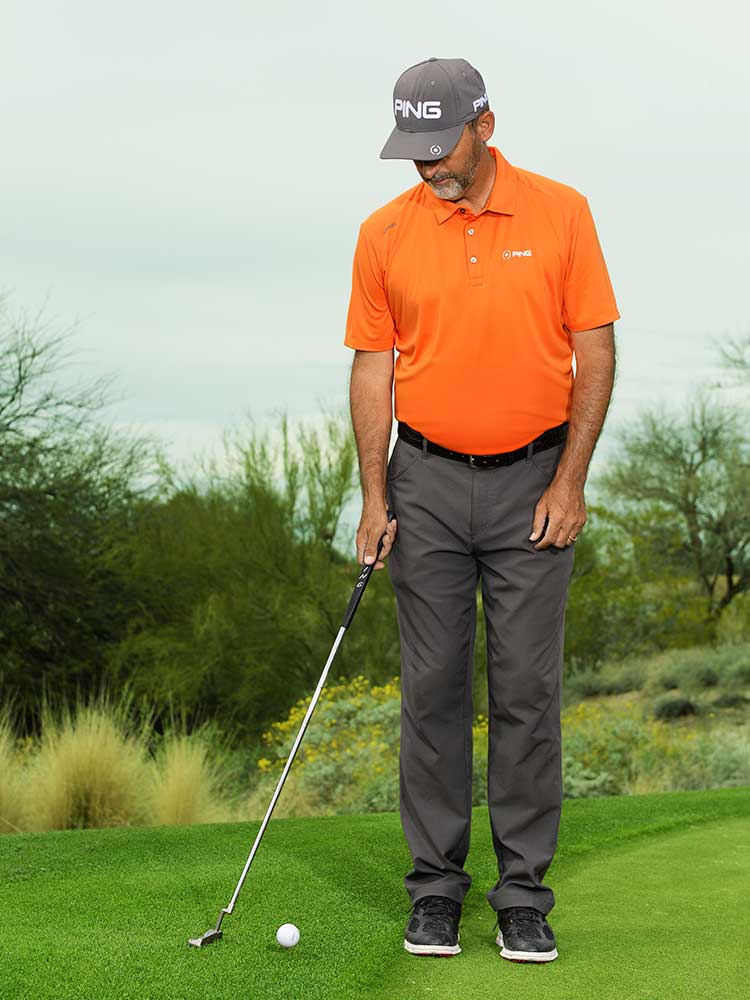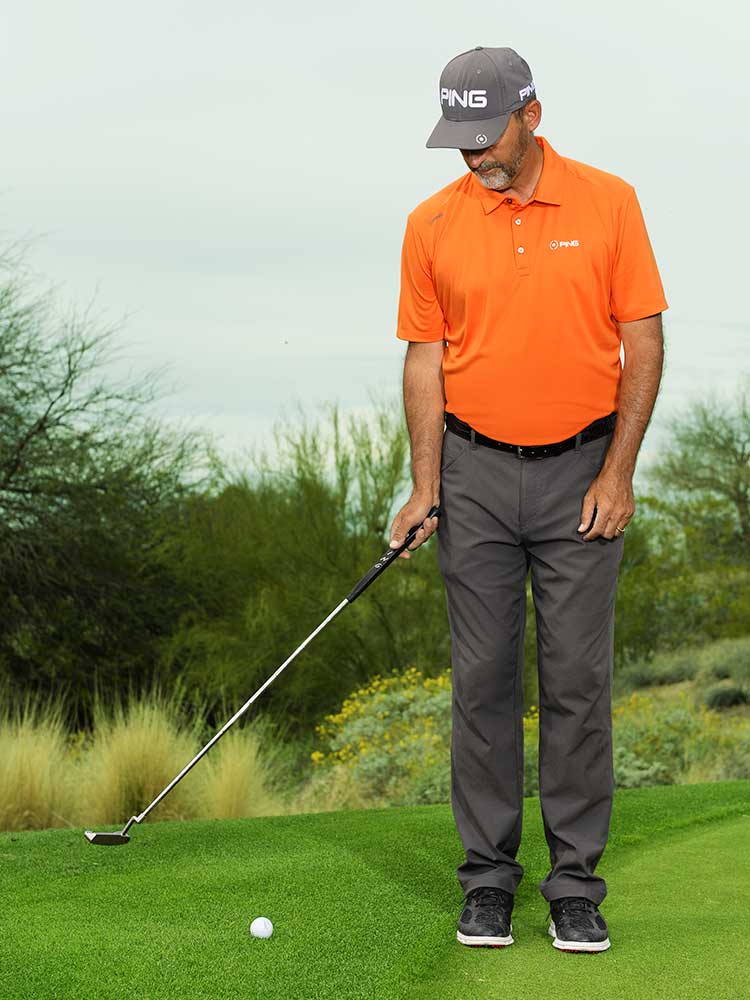If you asked a lot of golfers how to teach the putting stroke, they might say that when holding the club, the arms and shoulders create a triangle shape that points down at the ball. The goal is keeping that triangle shape intact during the stroke. I get the visual, but I think it’s upside down. The best putters make a stroke where the putterhead creates the triangle’s base and the grip end is the point. Can you picture that? This principle is why anchoring a putter against your chest is now against the rules. It makes putting way easier. Fortunately, you can use my triangle visual without anchoring. It will make your stroke so good, it will seem like cheating. But it isn’t.
– with Matthew Rudy
Think Hands, Not Arms
One feature of inconsistent putting strokes is too much shoulder-and-arm action. When you pull your arms back and then push them towards the hole to make a stroke, you’re essentially swinging the wrong end of the club and relying on a fundamentally inconsistent power source. For reliable distance control, I like a putting stroke that has fewer moving parts and takes advantage of gravity. You have to flip the triangle!

Correct 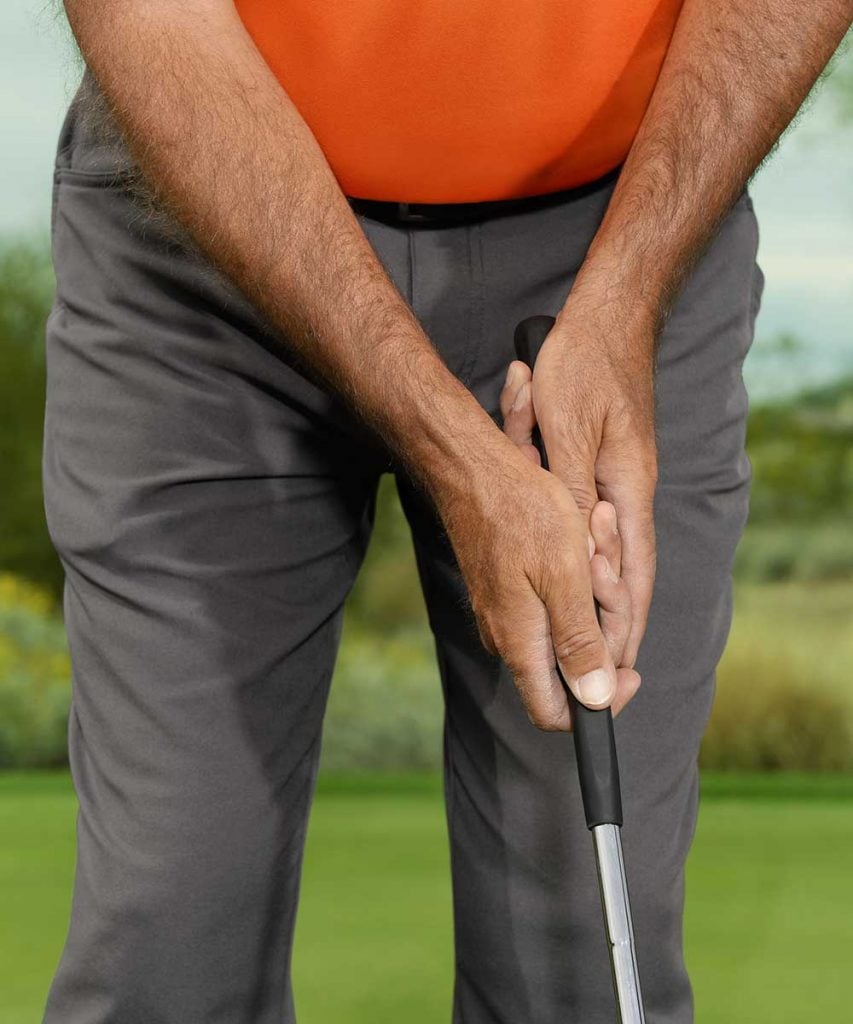
Correct 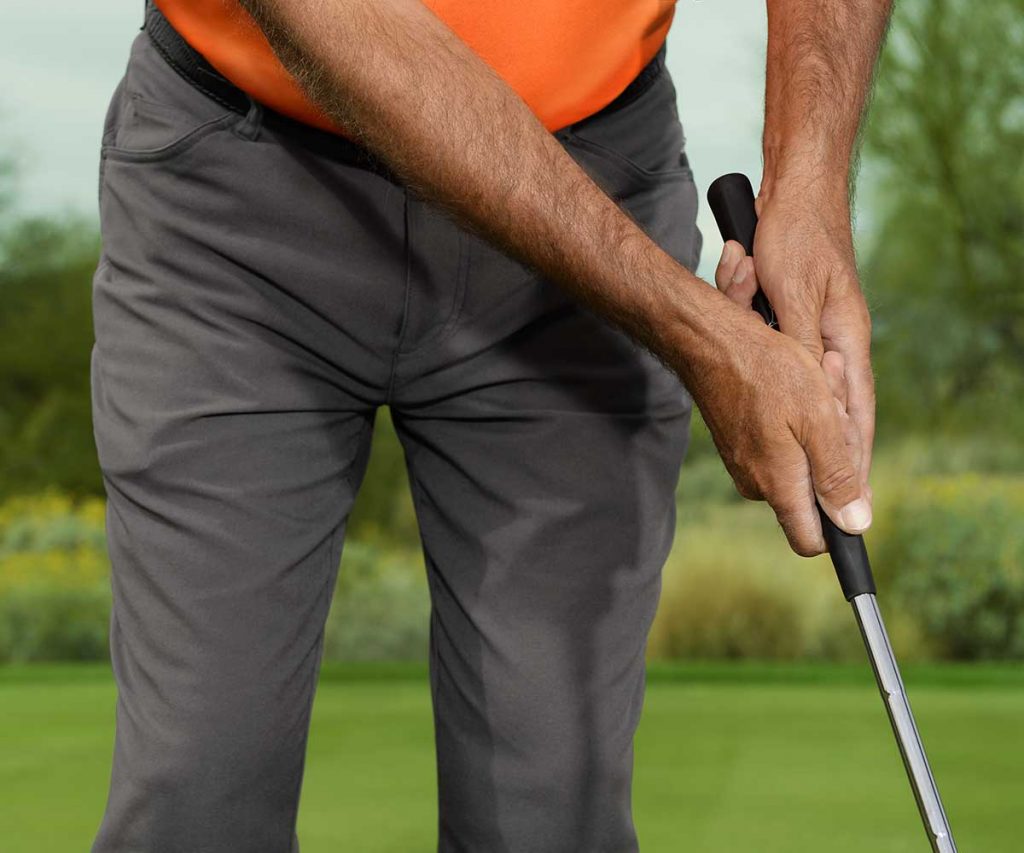
Incorrect
Work on keeping your hands relatively centred in front of your body, and use your wrists and elbows to swing the putter back [above left].
Instead of pushing the arms towards the target, let the putter use gravity to fall into the back of the ball. This is all the force you need to hit the putt [above middle]. For long putts, just bring the club back farther. The more time and distance it has to reach the ball, the faster it’s moving when it gets there.
Practise Hitting It Flush
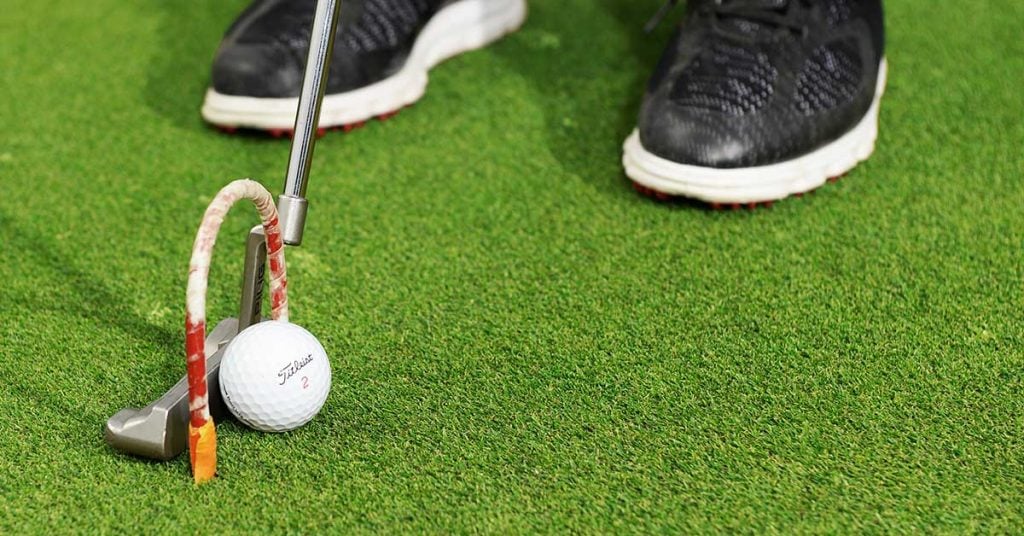
If you make solid contact using gravity to propel the stroke, the ball rolls effortlessly. Improve your contact with this drill: stick a metal hoop into a green [left], or a couple of tees about two inches apart. Now put a ball on the green so the back half is behind the hoop or tees, and make a “dead weight” stroke letting gravity do the job. Hit the ball with the centre of the face, and the putter should contact the tees or the hoop squarely after impact. If you manipulate the stroke with your hands, or shove the putter towards the ball, it will hit one side of the barrier before the other – something you’ll feel right away as negative feedback.
Feel The Natural Fall
To get a better sense of how gravity, not your arm swing, should let the putter fall into the ball, set up on a green next to the collar and the ball a foot into the fringe.
While holding the putter with just your trail hand, swing it back with your wrist only [above left] and then let it drop down to make the ball pop up and roll. You’ll quickly discover that you don’t have to add force with your hand to hit a putt with enough speed to get the ball rolling a long way. After several reps, switch to your lead hand and do the same drill. Then practise two-handed putts on the green, feeling that same free-fall sensation. Remember, it’s OK if it seems like your wrists and elbows are doing most of the work. In fact, it’s a sign you’re doing it right. Now you know the secret.
Stan Utley is based at Grayhawk Golf Club in Scottsdale, Arizona.

